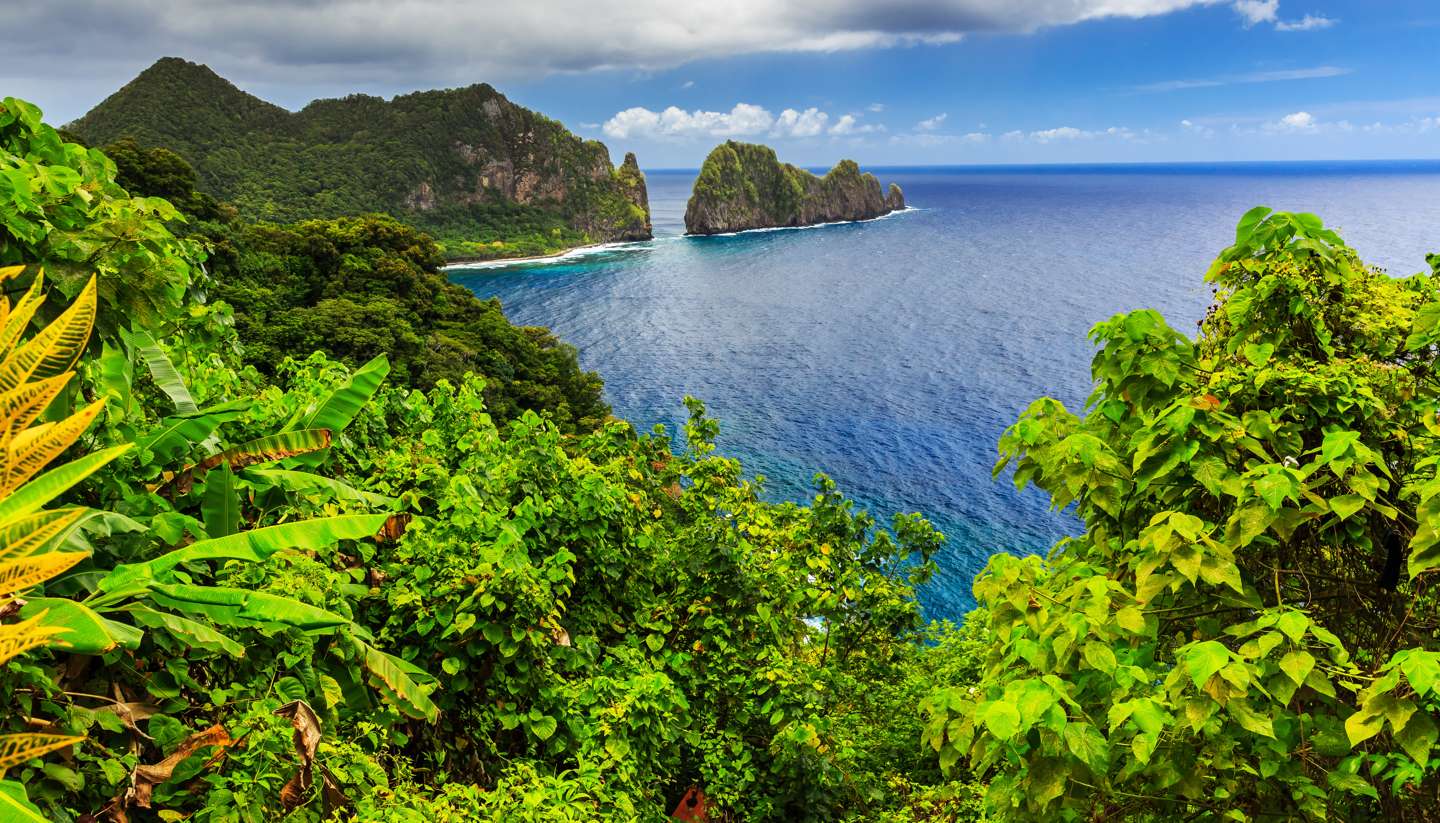American Samoa History, Language and Culture
History of American Samoa
Made up of five islands and two coral atolls, American Samoa is an unincorporated territory of the USA – its southernmost territory.
Man has lived there for some 3500 years, although contact with Europeans only goes back around 300 years – a Dutchman called Jacob Roggeveen is thought to have been the first to have recorded them in 1722. Some 50 years later the French explorer Louis-Antoine de Bourgainville named them the Navigator Islands and English traders and missionaries started to arrive soon after. The writer Robert Lois Stevenson visited on 25 March 1891, as did W Somerset Maugham on 15 December 1916.
Early contact with locals did not always go well and a particularly ferocious skirmish between islanders and French settlers on Tutuila, the largest island of modern American Samao, earned the Samoans a reputation for ferocity and the site the name of Massacre Bay.
By the dawn of the 20th century the islands had been split between Germany and the United States – the eastern group being known as the Tutuila Islands in 1900, Manu’a in 1904, then the US Naval Station Tutuila and, since 1911, American Samoa.
Towards the end of World War 1 an influenza pandemic swept the world and quick thinking Governor John Martin Poyer quarantined the territory. American Samoa, with New Caledonia and Brazil’s Marajó island, was one of only three places on Earth where no influenza deaths occurred. Poyer was awarded the Navy Cross.
During World War 2 US Marines stationed in American Samoa considerably outnumbered the local population. After the war a move to incorporate the territory was defeated due largely to the efforts of Tuiasosopo Mariota and the tribal chiefs. In 1949 the American Samoa Fono, a territorial legislature was founded and continues to meet in the village of Fagatogo, the official seat of government.
American Samoa’s government is divided into three branches. The Governor leads the executive and the legislative branch is led by the Fono, which consists of the House of Representatives elected by popular vote and the Senate represented by the village matai. The judicial branch is part of the US judicial system.
American Samoa has a non-voting representative elected to the US Congress.
Did you know?
• American Samoa has a higher rate of military enlistment than any other US state or territory.
• The popular Samoan song Fa’afofoga Samoa is thought to have been based on the final words of Imoa, the last man to have been executed on American Samoa, on 24 November 1939.
• In the early 1970s American astronauts returned to Earth a few hundred miles from Pago Pago and were brought to the islands on their way back to the US mainland.
American Samoa Culture
Religion in American Samoa
Half of the population are Christian Congregational. There are also Roman Catholics, Latter Day Saints and Protestants, among others.
Social Conventions in American Samoa
Traditional Samoan society is still bound by very strict customs and, despite the younger generation's dissatisfaction with the old values, they are very much adhered to. The government issues an official list of behaviour codes for both Samoas. Skimpy shorts or other revealing clothes should be avoided except when swimming or climbing coconut palms, although disapproval of shorts, if they are not too short, is on the wane.
Samoan social behaviour conforms to strict and rather complicated rituals, to which the visitor will probably be introduced on arrival, and which should be respected.
In the early evening hours, even if swimming offshore, be sure to avoid making any noise that could interrupt the Samoans' prayer period. Usually three gongs are sounded. The first is the signal to return to the house, the second is for prayer and the third sounds the all-clear. In some villages, swimming and fishing are forbidden on Sunday.
A visitor who happens to be invited to stay in a Samoan household should be mindful of American Samoan customs. On leaving, making a gift, a mea alofa (literally a 'thing of love') of shirts, belts or dress-length fabrics is most appreciated. Samoans are extremely hospitable and visitors may receive more than one invitation to stay with neighbours. However, it is inappropriate to leave your first hosts before a pre-arranged date.
Language in American Samoa
Samoan, but many islanders speak English.

